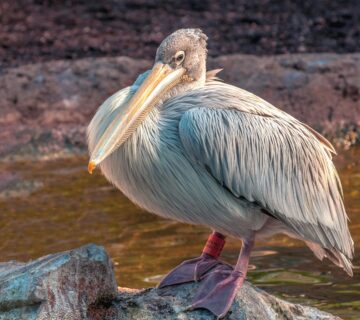Why There Are No Crocodiles in Kidepo Valley National Park?
Kidepo Valley National Park, tucked away in the remote north-eastern corner of Uganda, is one of the country’s most breathtaking wildernesses. The park is renowned for its rugged savannahs, dramatic mountains, and exceptional wildlife diversity. Yet, unlike most Ugandan parks that host crocodiles in their water bodies, Kidepo Valley National Park stands out for the noticeable absence of these formidable reptiles. The lack of crocodiles in this park is not merely by chance but results from a combination of environmental, climatic, and ecological factors that make the region unsuitable for their survival.
Harsh Climatic Conditions
The Kidepo region is characterized by a semi-arid climate with long dry seasons and very little rainfall. This harsh weather pattern means that water sources within the park—particularly the Kidepo and Narus rivers—are seasonal. For most of the year, these rivers dry up completely, leaving behind only small, scattered pools that cannot sustain large aquatic animals such as crocodiles. Crocodiles require permanent water bodies to regulate their body temperatures, breed, and hunt. The frequent drying up of rivers in Kidepo therefore deprives them of the stable aquatic environment they need to survive.
Lack of Permanent Water Bodies
Crocodiles thrive best in large and permanent water systems like rivers, lakes, and swamps where they can find abundant food and shelter. In Kidepo Valley National Park, there are no large, year-round water sources. Even the Narus River, which flows through the park’s southern part, becomes a series of isolated pools during the dry season. Such temporary water bodies cannot support crocodile populations since they evaporate or shrink too much to sustain aquatic life throughout the year. This makes the park an unsuitable habitat for the reptiles.
Unsuitable Habitat and Terrain
The terrain of Kidepo is largely open grassland and thorny bushland with few shaded, moist areas. Crocodiles require soft, moist riverbanks for nesting and basking, but the park’s dry, compact soils and rocky streams make it difficult for them to dig nests or hide their eggs. Additionally, the absence of thick aquatic vegetation reduces the number of safe zones where crocodiles can ambush prey or seek refuge from predators and heat. These environmental limitations have made it impossible for crocodile populations to establish themselves in the park.
Limited Food Availability
Crocodiles feed on fish, amphibians, and small mammals that come to drink at water sources. However, the temporary and shallow nature of Kidepo’s rivers cannot sustain sufficient fish populations to support crocodile feeding habits. The small pools that remain during dry spells are often populated with hippos, buffaloes, and other large animals that may disturb or compete for space. With limited aquatic prey, crocodiles would struggle to find adequate food for survival and reproduction.
Isolation from Other Water Systems
Another key reason crocodiles are absent in Kidepo is the park’s isolation from major river systems such as the Nile. In the Nile, crocodiles are abundant. However, the region has vast stretches of dry land and mountain ranges. These prevent the natural migration of crocodiles into Kidepo’s valleys. Without connectivity to larger, crocodile-inhabited water systems, it is nearly impossible for these reptiles to colonize the park’s watercourses.
Ecological Balance and Adaptation
Over time, the ecosystem in Kidepo Valley National Park has adapted to life without crocodiles. Other predators such as lions, leopards, and hyenas have filled the top predatory roles around the limited waterholes. This ecological balance has reduced the need for an aquatic apex predator like the crocodile. The park’s biodiversity thrives around land-based interactions rather than aquatic ecosystems, further solidifying the absence of crocodiles.
Conclusion
The absence of crocodiles in Kidepo Valley National Park is primarily due to environmental and ecological constraints. These include the lack of permanent water bodies, extreme aridity, unsuitable nesting conditions, and isolation from other crocodile habitats. These combined factors create a landscape that is breathtakingly wild yet inhospitable for aquatic reptiles. Kidepo remains a unique gem in Uganda’s wildlife heritage. This is because in this park, the savannah dominates and the drama unfolds on land rather than in the water.





